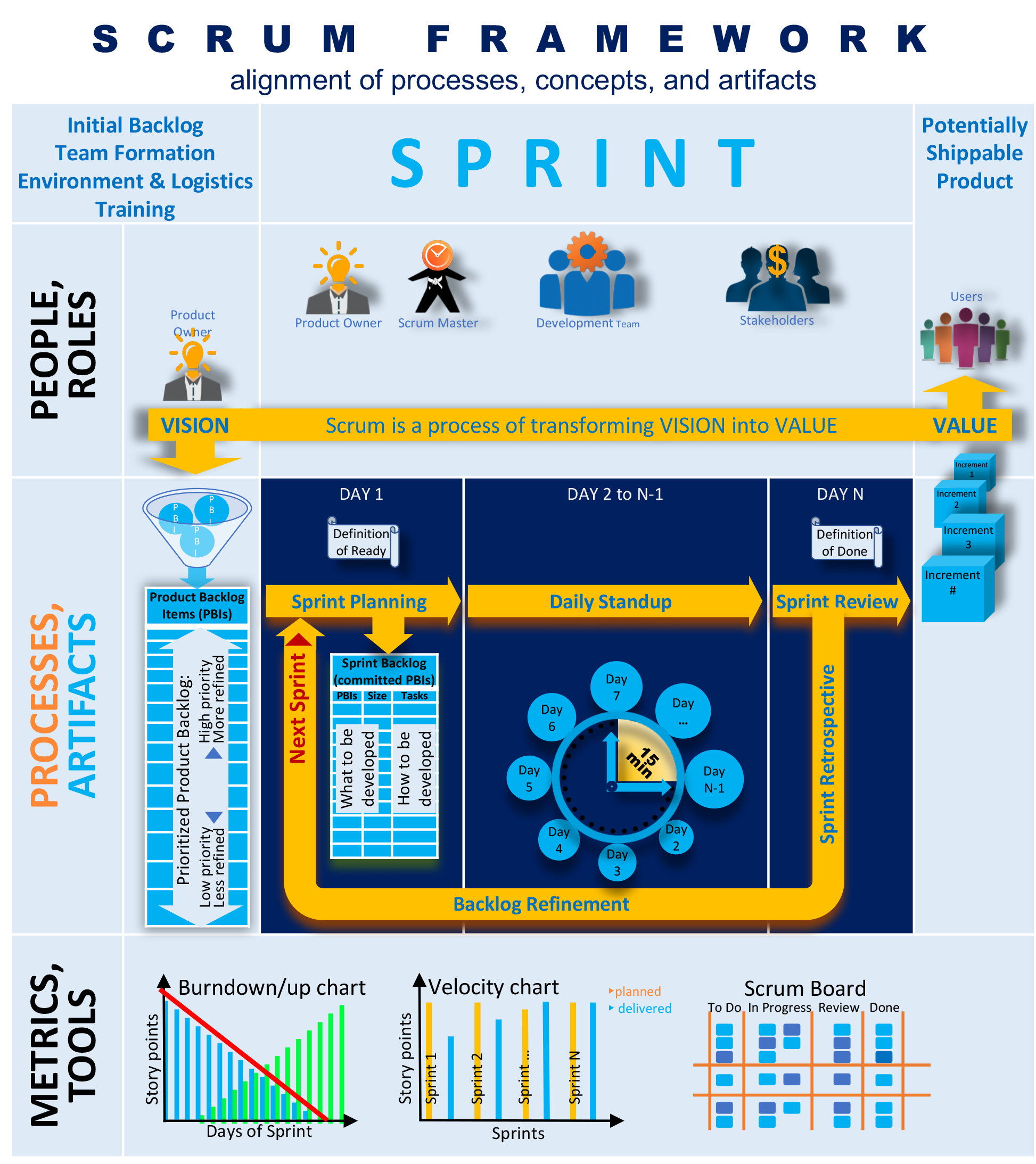SCRUM FRAMEWORK
tivasys2017-07-06T17:58:49+00:00
WHAT IS SCRUM?
SCRUM VALUES
Courage – collaborative work of cross-functional members instils courage to tackle greater challenges than an individual could take.
Openness – co-location, meetings, and information radiators ensure team’s results, works, and challenges sharing and openness.
Commitment – sprint ownership and self-organization create strong commitments to the goal.
Respect – team work and sharing sprint success and under-delivering necessitate respect and help each other become worthy of respect
SCRUM THEORY
 Founded on empiricism, which assumes that knowledge comes from experience and making decisions based on what is experientially known, Scrum enforces:
Founded on empiricism, which assumes that knowledge comes from experience and making decisions based on what is experientially known, Scrum enforces:
Transparency, e.g., DoD, DoR, Daily Standup
Inspection, e.g., Sprint review, product demo
Adaptation, e.g., Prioritization, sprint planning, retrospective
Retrospective allows the team to inspect and improve its process in the subsequent Sprint.
SCRUM TEAM
Product Owner PO: Voice of customers, manages PBIs, ensures maximum ROI, has expertise of the product Scrum
Master SM: A servant-leader who enforces Scrum practice and rules, facilitates scrum ceremonies, helps PO, sets effective collaboration, possesses coaching skills, facilitation techniques, and leadership qualities, removes obstacles, and empowers the team.
Development Team: Self-organizing, Cross-functional, Creates the Increment. Team’s size is recommended 6±3 members, excluding PO and SM.
Other people involved are Stakeholders, Users, Sponsors, Customers. Stakeholders: Review increment, Provide feedback, Suggest new PBIs
SCRUM CEREMONIES
Backlog Refinement, usually consuming no more than 10% of the Development Team’s capacity, is an ongoing activity.
Also a good practice is frequent User Acceptance Testing.
TIMEBOX
Sprint Planning 4h | Daily Standup 15 min | Sprint Review 4h | Sprint Retrospect 3h
SCRUM ARTIFACTS
Functionalities delivered by the Sprint are collectively referred to as an Increment Other artifacts are: Sprint goal, DoD, DoR…
Scrum team creates, continually reviews, and agrees on Definition of Done (DoD) and Definition of Ready (DoR) throughout the project.
Copyright © 2017 Joseph Barjis, Institute of Engineering and Management.

Leave a Reply